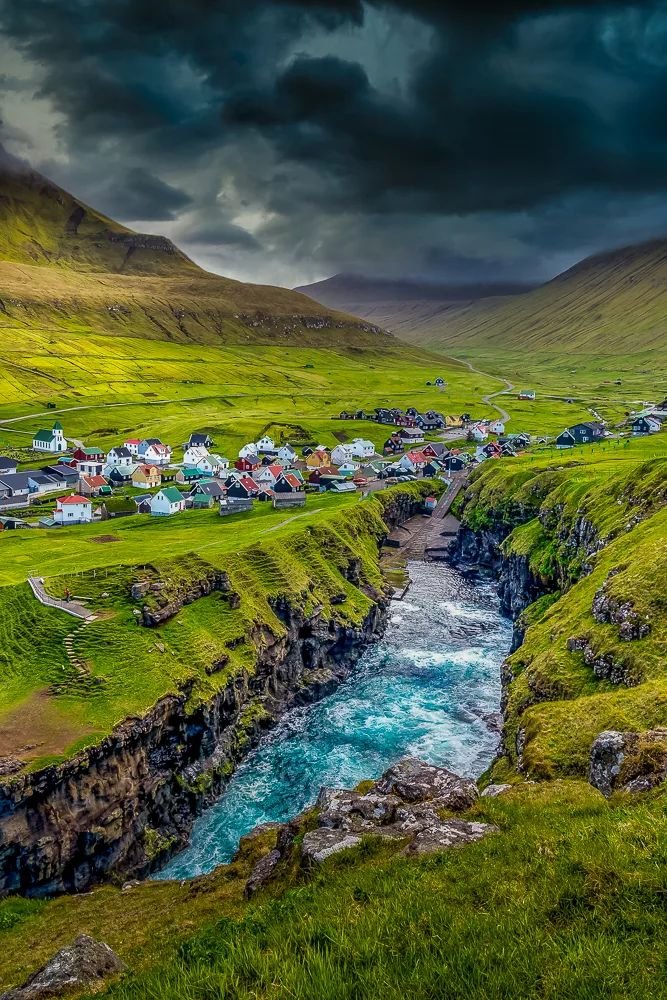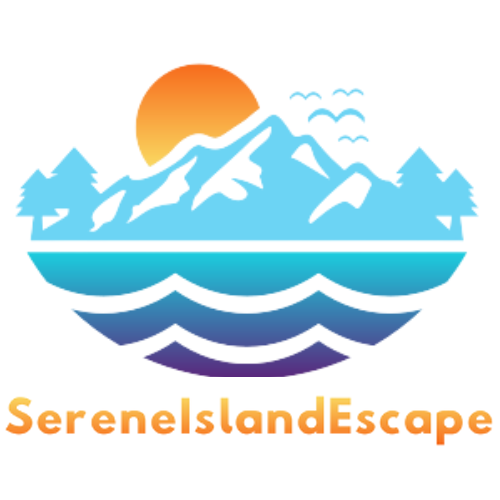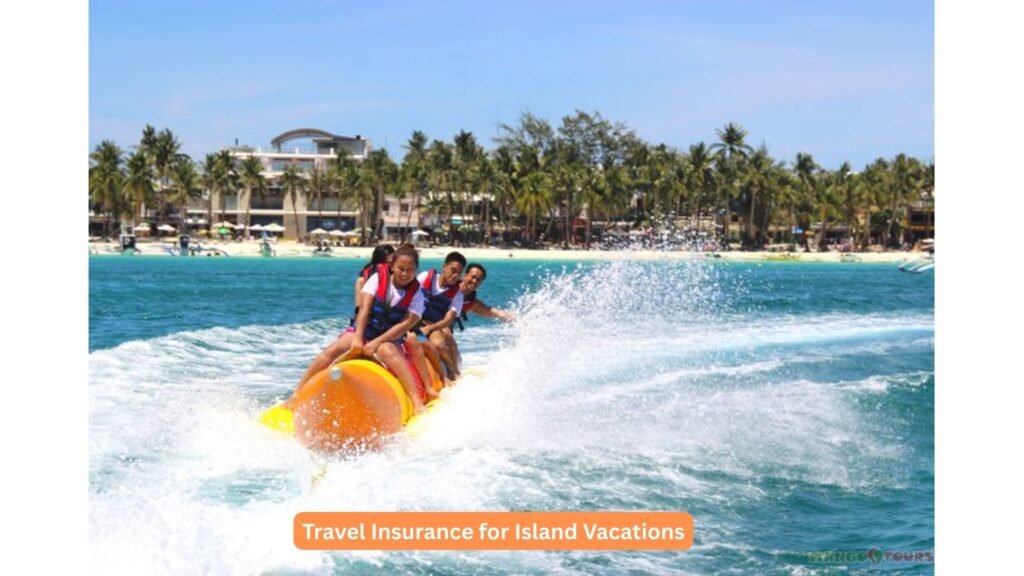When exploring the best island hiking trails around the world, you’ll discover a uniquely captivating experience that mainland paths simply cannot match. These island pathways offer the perfect combination of dramatic elevation changes and endless ocean horizons, creating hiking experiences that are both challenging and rewarding. The best island hiking trails provide that special sense of isolation, concentrated biodiversity, and panoramic water views that make every step worthwhile. Islands represent nature’s perfect hiking playgrounds, where diverse ecosystems are compressed into navigable territories that can be explored in days rather than weeks.
- The geographical isolation of islands has created unique evolutionary conditions, resulting in trail systems that showcase endemic species and plant life you won’t encounter anywhere else on Earth, from the giant tortoises of Galapagos to the ancient cedar forests of Japan’s Yakushima.
- The best island hiking trails provide the rare opportunity to experience multiple ecosystems in a single day, where you might begin in lush rainforest, ascend through cloud forest, cross volcanic landscapes, and descend to pristine beaches—all within a matter of hours.
- The psychological impact of being surrounded by water creates a profound sense of journey and accomplishment, where each island becomes a complete world unto itself waiting to be discovered on foot, offering natural boundaries that make navigation intuitive even for less experienced hikers.
- Many island trails follow ancient pathways used by indigenous peoples for centuries, adding layers of cultural significance and historical context to your hiking experience that deepens your connection to these special places.
What Makes Island Hiking Trails Exceptional
Island trails stand apart from continental hiking experiences through their remarkable concentration of diverse landscapes and the unique interplay of elevation and coastline. The finite nature of islands creates a special hiking dynamic where you’re always oriented by the surrounding sea, yet can experience dramatic changes in terrain, climate, and ecosystems within surprisingly short distances. This geographical compression is what makes island hiking so rewarding—offering adventures that deliver maximum scenic variety with efficient use of your precious travel time.
- The volcanic origin of many hiking islands creates otherworldly landscapes where ancient lava flows, calderas, thermal features, and dramatic cliff formations become your constant companions, offering geological marvels that mainland trails rarely match in such abundance.
- Island microclimates create fascinating weather patterns where one side of a mountain might be arid while the other hosts lush rainforest, allowing hikers to experience startling ecological transitions that would normally require traveling hundreds of miles on continental landmasses.
- The constant presence of the ocean provides not only spectacular views but also a cooling influence that can make hiking more comfortable, while simultaneously offering impromptu swimming opportunities to refresh yourself—a welcome trail feature during warm-weather hikes.
- Many of the best island hiking trails feature circumnavigation routes that allow hikers to completely encircle the island, creating a uniquely satisfying journey with a clear beginning and end that tells the complete story of a place through its changing landscapes and coastal features.
Best Seasons for Island Hiking Adventures
Timing your island hiking adventure correctly can make the difference between an unforgettable journey and a disappointing ordeal of mud, mosquitoes, or scorching heat. Islands across different latitudes experience vastly different seasonal patterns, from the predictable wet and dry seasons of tropical destinations to the more moderate temperature fluctuations of temperate islands. Understanding these patterns allows you to maximize your chances of ideal hiking conditions while potentially avoiding both crowds and extreme weather events.
- Mediterranean islands like Corsica, Crete, and Sicily offer ideal hiking conditions during spring (April-June) and fall (September-October) when temperatures are moderate, wildflowers carpet the landscape, and summer crowds have dispersed, leaving trails peaceful and accommodation prices lower.
- Tropical island destinations such as Hawaii, Caribbean islands, and southeast Asian archipelagos are best hiked during their dry seasons—typically December through April—when trails are less muddy, stream crossings are safer, and views aren’t obscured by constant rainfall or low-hanging clouds.
- The islands of New Zealand and Tasmania present their best hiking faces during the Southern Hemisphere summer (December-March), when alpine trails are free of snow and daylight hours are extended, though shoulder seasons (November and April) can offer similar conditions with significantly fewer fellow hikers.
- Japan’s island trails show their greatest beauty during spring cherry blossom season (late March-April) and autumn foliage displays (October-November), while summer hiking should be approached with caution due to the challenging combination of heat, humidity, and the regional rainy season.
10 Breathtaking Island Hiking Trails Worth the Journey
These remarkable trails represent the pinnacle of island hiking experiences, each offering a unique combination of natural beauty, physical challenge, and cultural significance. From ancient volcanic landscapes to lush tropical paradises, these paths will lead you through some of the most spectacular island environments on the planet, creating memories that will last long after your hiking boots have dried. Each trail has been selected not just for its scenic qualities but also for the transformative experience it offers—the kind of journey that changes how you see both the natural world and yourself.
World-Famous Pacific Island Trails
- Kalalau Trail, Kauai, Hawaii — This legendary 11-mile coastal path along Kauai’s Napali Coast traverses five valleys and crosses countless streams before reaching the isolated Kalalau Beach, revealing breathtaking views of emerald cliffs plunging into the Pacific that have made it one of the most coveted hiking permits in the United States.
- Rakiura Track, Stewart Island, New Zealand — This gentle 32-kilometer circuit offers an accessible introduction to New Zealand’s southernmost island, where pristine beaches meet ancient podocarp forests teeming with native birds, including the elusive kiwi which can sometimes be spotted during daylight hours—a rare treat for wildlife enthusiasts.
European Island Hiking Gems
- GR20, Corsica, France — Widely regarded as Europe’s toughest long-distance trail, this 180-kilometer mountain path traverses Corsica’s rugged interior, featuring dramatic granite peaks, alpine lakes, and traditional shepherd huts where hikers can rest while experiencing the island’s unique cultural heritage and sampling local cheeses made in the mountains.
- Fira to Oia Trail, Santorini, Greece — This 10-kilometer caldera-edge pathway connects Santorini’s two most iconic towns, winding along the rim of an ancient volcanic crater with continuous views of the sapphire Aegean Sea, whitewashed villages, and the mysterious central islands formed by one of history’s most massive eruptions.
Asian Island Trekking Destinations
- Yakushima Traversing Route, Japan — This challenging multi-day journey across Japan’s most mystical island takes hikers through ancient cedar forests that inspired Studio Ghibli’s “Princess Mononoke,” where moss-covered trees over 1,000 years old create an enchanted atmosphere unlike anywhere else on Earth.
- Laugavegur Trail, Iceland — This otherworldly 55-kilometer path showcases Iceland’s extraordinary geological diversity, passing multicolored rhyolite mountains, obsidian fields, bubbling hot springs, and black sand deserts—a landscape so lunar that NASA once used it to train astronauts for moon missions.
Southern Hemisphere Trail Experiences
- Three Capes Track, Tasmania, Australia — This architecturally enhanced 48-kilometer trail along Tasmania’s southeastern coast features dramatic dolerite cliffs rising 300 meters above the Tasman Sea, with strategically placed viewing platforms and artistic installations that frame the wild beauty of the Southern Ocean.
- Waitukubuli National Trail, Dominica — The Caribbean’s first long-distance hiking trail spans 185 kilometers across the “Nature Island,” connecting hot springs, rainforests, and rural communities while showcasing how this small island nation has prioritized sustainable tourism and forest conservation despite economic pressures.

Atlantic Island Adventures
- Rota Vicentina, Portugal (Azores) — This 120-kilometer path along Portugal’s southwestern Atlantic coast combines dramatic cliff-top walking with cultural immersion in traditional fishing villages, where hikers can arrange to accompany local fishermen at dawn or learn about the ancient art of collecting barnacles from the rocky shoreline.
- Camino de Santiago (Camino del Norte), Spain — This less-traveled northern route of the famous pilgrimage passes through Spain’s stunning coastal regions and crosses the island-like autonomous communities of the Basque Country, Cantabria, and Asturias, blending spiritual history with breathtaking Bay of Biscay views and some of Spain’s most celebrated cuisine.
Unique Activities and Experiences Along Island Trails
Island hiking offers far more than just putting one foot in front of another—it presents opportunities for extraordinary side adventures and meaningful cultural experiences that enhance your journey. The geographical boundaries of islands often preserve traditional ways of life and create unique natural phenomena that hikers can incorporate into their adventures. These special experiences transform a simple hike into a multidimensional journey that engages all your senses and creates deeper connections with these remarkable places.
Water-Based Trail Activities
- Many of the best island hiking trails intersect with prime snorkeling and diving locations, allowing hikers to cool off while exploring underwater worlds—imagine descending from a volcanic peak in the morning to swim among tropical fish on a coral reef that afternoon, creating a perfect land-and-sea adventure day.
- Island trails frequently lead to hidden natural hot springs, secluded waterfalls, and private beaches that remain inaccessible to day-trippers and cruise ship crowds, rewarding hikers with pristine natural experiences that feel like personal discoveries even on well-traveled islands.
Cultural Immersion Opportunities
- Indigenous cultural demonstrations and traditional craft workshops can be found along many island trails, particularly in places like Hawaii, New Zealand, and Caribbean islands, where local communities maintain strong connections to ancestral practices and are often eager to share their knowledge with respectful visitors.
- Geological wonders such as lava tubes, blowholes, natural bridges, and tidal features create fascinating detours on many island hikes, offering natural science lessons and spectacular photography opportunities that highlight the dynamic forces that created and continue to shape these isolated landmasses.
Accommodation Options Near Premier Island Trails
Where you rest your head after a day of island hiking can range from basic wilderness camping to luxurious eco-resorts that blend seamlessly into their natural surroundings. Island accommodations often reflect local building traditions and materials, creating stays that become an extension of your immersion in the destination. The limited space on islands typically means that accommodations must be reserved well in advance, particularly for popular trails during high season, but planning ahead rewards hikers with some of the most extraordinary places to sleep on the planet.
Rustic and Authentic Stays
- Remote mountain huts and trail shelters on islands like Corsica, Iceland, and New Zealand offer basic but essential facilities for multi-day hikers, creating natural community gathering places where trekkers from around the world share meals, stories, and trail information—sometimes forming hiking partnerships that last for days or even lifetimes.
- Beachfront camping areas on hiking islands offer the unmatched experience of falling asleep to the sound of waves and waking up to sunrise over the ocean, though these idyllic spots often require permits secured months in advance and strict adherence to leave-no-trace principles to preserve their pristine condition.
Comfort and Cultural Accommodations
- Family-run guesthouses and small inns in island villages provide authentic cultural experiences where hosts often prepare meals from locally sourced ingredients, offer valuable local knowledge about trail conditions, and sometimes even arrange transportation to trailheads or luggage transfers between overnight stops.
- Eco-lodges built with sustainable materials and powered by renewable energy can be found near many premier island hiking trails, offering guilt-free luxury with minimal environmental impact, where outdoor showers, farm-to-table dining, and architecture designed to maximize natural airflow create a harmonious extension of your nature experience.
Local Cuisine and Trail Refreshments
Island cuisines represent some of the world’s most distinctive food traditions, shaped by isolation, unique agricultural conditions, and the bounty of surrounding waters. After a day of challenging hiking, exploring these culinary landscapes becomes both a pleasure and a necessity for replenishing energy. Many islands maintain food traditions that have disappeared elsewhere, preserving heritage recipes and preparation methods that connect hikers to centuries of local history through their taste buds.
Coastal Flavors and Seafood Experiences
- Coastal island trails frequently intersect with fishing villages where you can arrange for freshly caught seafood prepared according to local traditions—from New Zealand green-lipped mussels steamed with indigenous herbs to Mediterranean islands’ fish stews flavored with wild fennel gathered along the same trails you’ve been hiking.
- Tropical hiking islands offer trailside fruit stands or farmgate sales where you can purchase just-picked mangoes, passion fruit, or pineapples directly from producers, creating the ultimate farm-to-trail eating experience that both refreshes and supports local agriculture.
Island Beverages and Preserved Delicacies
- Island distilleries and breweries often utilize unique local ingredients like volcanic-filtered water or endemic plants for flavoring, producing distinctive spirits and beers that make perfect post-hike rewards while providing insight into how islands develop unique approaches to universal pleasures.
- Traditional preserving methods remain vibrant on many islands where seasonal abundance must be managed without modern refrigeration, resulting in distinctive products like Japan’s umeboshi (pickled plums), Corsican charcuterie cured with island herbs, or Caribbean hot sauces that serve as edible souvenirs of your hiking adventure.
Water Sports in Tropical Islands
Practical Tips for Island Hikers
Island environments present unique challenges and considerations that even experienced mainland hikers might not anticipate. From rapidly changing weather patterns to limited rescue options, being properly prepared can make the difference between a challenging-but-rewarding adventure and a potentially dangerous situation. Island trails often lack the infrastructure of more developed hiking regions, requiring greater self-sufficiency and advance planning, but this additional preparation becomes part of the adventure that distinguishes island hiking as a more immersive outdoor experience.
Essential Gear and Preparation
- Pack lightweight, quick-drying clothing layers suitable for both tropical heat and unexpected storms, as many islands experience multiple weather patterns in a single day due to orographic effects where mountains intercept moisture-laden ocean winds, creating rain shadows and microclimates that can shift your hiking experience in minutes.
- Water management requires special attention on islands, where freshwater sources may be limited or contaminated by agricultural runoff—research water availability thoroughly before setting out, carry appropriate filtration systems, and consider adding electrolyte replacements to combat increased perspiration in humid island environments.
Navigation and Regulations
- Navigation tools should include both traditional maps and digital backups with pre-downloaded trails and waypoints, as many islands have limited or non-existent mobile coverage, while dense vegetation and steep terrain can make orientation challenging even on well-marked routes.
- Research local regulations regarding protected areas, cultural sites, and private land crossings well before arrival, as many islands have complex ownership patterns and conservation designations that may require special permits or guided access arranged months in advance.

The Transformative Power of Island Trails
Island hiking offers more than scenic beauty and physical challenge—it provides a unique form of psychological journey that mainland trails rarely match. The clear boundaries of an island create a complete world to explore, where beginning and end points hold special significance. This geographical containment focuses the hiking experience, eliminating the distractions of broader horizons and creating a more intense connection with the landscape. The best island hiking trails become metaphors for life journeys—complete adventures with clear challenges, meaningful discoveries, and satisfying conclusions.
Psychological and Spiritual Benefits
- The psychological satisfaction of conquering an island on foot—whether circumnavigating its coastline or traversing its highest points—creates a sense of completion that continental hiking rarely matches, where you can stand at trail’s end and literally see the entire world you’ve traversed through your own physical effort.
- Island ecosystems tell evolutionary stories of adaptation and resilience that mirror our own life challenges, where geographic isolation has forced creative solutions to environmental pressures—a walking lesson in how limitations can foster innovation rather than restriction.
Cultural and Mental Rejuvenation
- The cultural heritage preserved on islands often represents the last vestiges of traditions that have been diluted or lost on mainlands, giving hikers privileged glimpses into historical ways of living that maintain closer connections to natural cycles and place-based knowledge.
- The best island hiking trails create a natural digital detox as limited connectivity forces present-moment awareness, where the mind can fully engage with immediate surroundings without technological distractions, often resulting in a mental clarity and rejuvenation that transcends the physical benefits of the activity.
Embarking on an island hiking adventure means stepping into landscapes where nature’s forces are displayed with remarkable clarity and intensity. Whether you’re traversing ancient volcanic calderas, winding through endemic forests found nowhere else on Earth, or following coastal paths above crashing waves, island trails offer concentrated natural experiences that mainstream destinations simply cannot match. Pack your hiking boots, research your permits, and prepare for adventures where every step leads to discovery on these magnificent island pathways.

